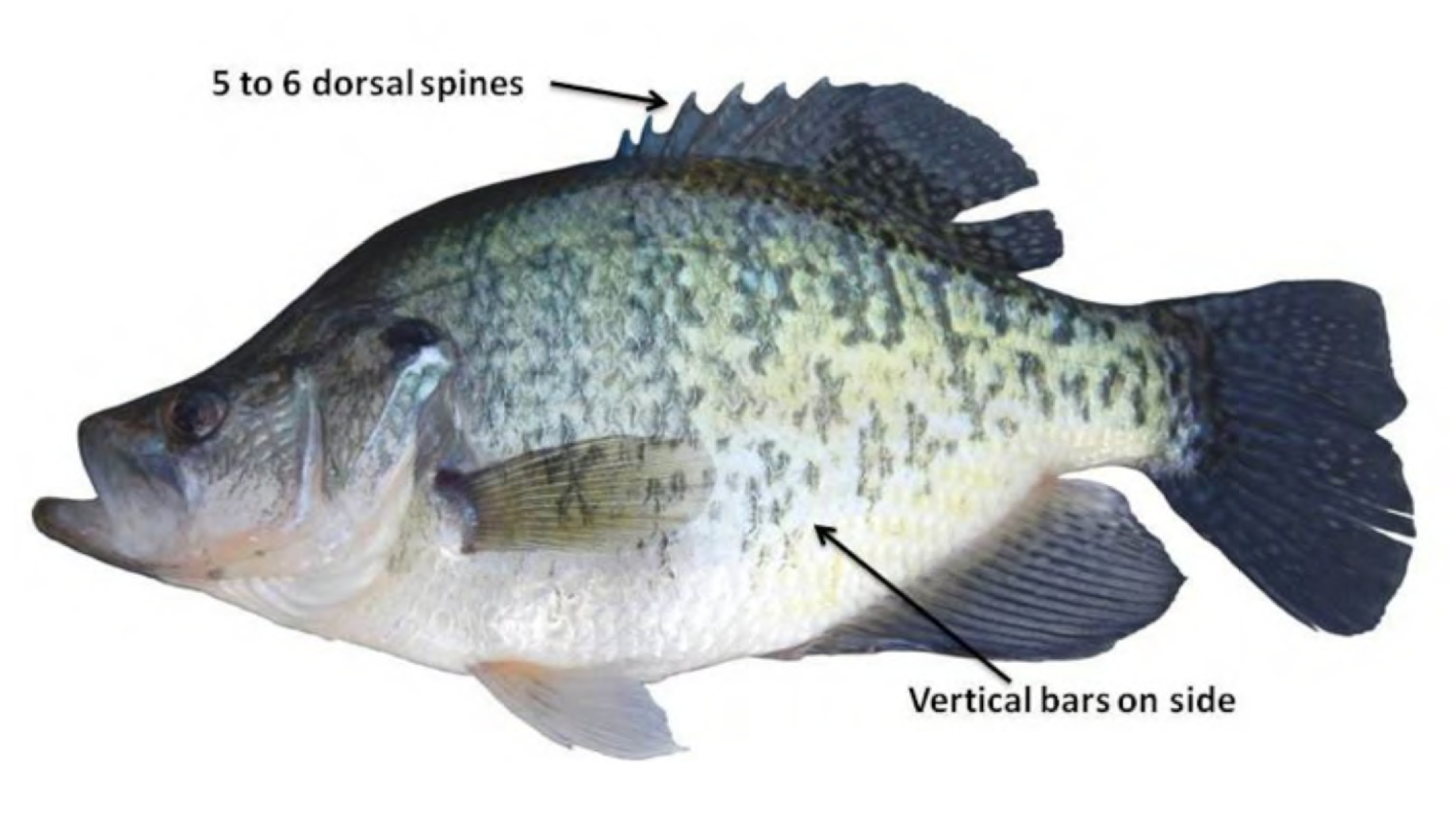

Scientific Name
Pomoxis annularis
Other Names
White perch, Sac-a-lait, Slab, and Papermouth.
Description
White crappie are deep-bodied and silvery in color, ranging from silvery-white on the belly to a silvery-green or dark green on the back with possible blue reflections. There are several dark vertical bars on the sides. Males develop dark coloration on the throat and head during the spring spawning season, which can cause them to be mistaken for black crappie. White crappie have five or six spines on the dorsal fin, whereas black crappie have seven or eight spines. White crappie typically weigh 1 to 3 pounds, grow to 14 inches or more, and live up to 10 years.
Habits and Habitat
Adults feed on small fish and insects. Crappie prefer deep water near drop offs and areas of cover. White crappie can be found in many different types of habitats, including reservoirs, oxbow lakes, and rivers. Like other members of the sunfish family, white crappie are nest builders. They produce many eggs, which can cause overpopulation, slow growth, and small sizes in small lakes and ponds. White crappie spawn from March through May when water temperatures are between 58ºF and 65ºF. White crappie can tolerate muddier water than black crappie.
State Record
The current state and world record white crappie was caught by Fred Bright from Memphis, Tennessee in 1957 from Enid Lake; it weighed 5 pounds 3 ounces, and was 21 inches in length.
Fishing Fact
Popular baits for white crappie include jigs, small crank baits, and minnows. These fish are often found around structures, such as logs, brush piles, and cypress trees.